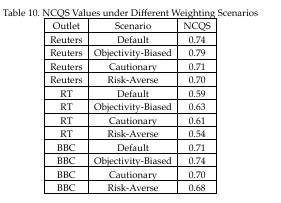Beyond Binary Judgments: A Neutrosophic Framework for Evaluating News Writing Quality through Common and Uncommon Meaning
Keywords:
Double Valued Neutrosophic Set; News Quality Evaluation; Neutrosophy; Subjectivity in Journalism; Neutrality; Neutrosophic Logic; Media Analysis; Content Assessment; News Objectivity.Abstract
The quality of news writing plays a crucial role in how societies perceive truth,
construct narratives, and react to global events. Traditional models of news evaluation often rely
on binary assessments labeling content as either objective or biased, factual or opinionated.
However, this binary lens fails to capture the nuanced reality of journalistic content, where truth
and bias can coexist within the same text. This study introduces a novel analytical framework
grounded in neutrosophic theory, which emphasizes the identification of common parts in
uncommon things and uncommon parts in common things [1]. Applying this concept, the
framework captures the overlapping and divergent elements between seemingly different or
similar news articles. By assigning neutrosophic truth (T), indeterminacy (I), and falsehood (F)
values to textual segments, the proposed model enables a multidimensional analysis of news
content. A case study comparing three international media outlets is used to validate the
framework. The results show that the neutrosophic approach provides a more refined, adaptable,
and philosophically sound method for evaluating the quality of journalistic writing. Additionally,
we employ the Double Valued Neutrosophic Set (DVNS) to handle uncertainty in the evaluation
process. DVNS is integrated with the MABAC method to rank the alternatives. An illustrative
example is presented, involving eight criteria and seven alternatives. The weights of the criteria
are also computed.
Downloads

Downloads
Published
Issue
Section
License
Copyright (c) 2025 Neutrosophic Sets and Systems

This work is licensed under a Creative Commons Attribution 4.0 International License.






